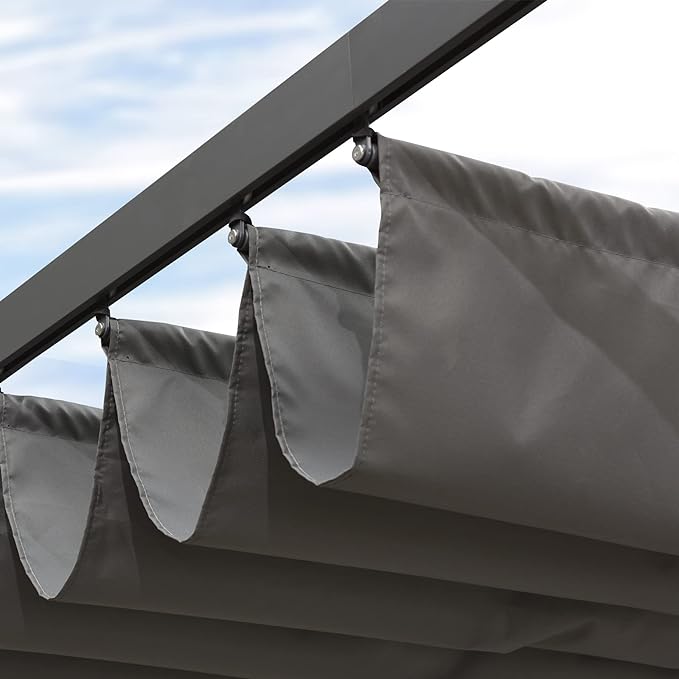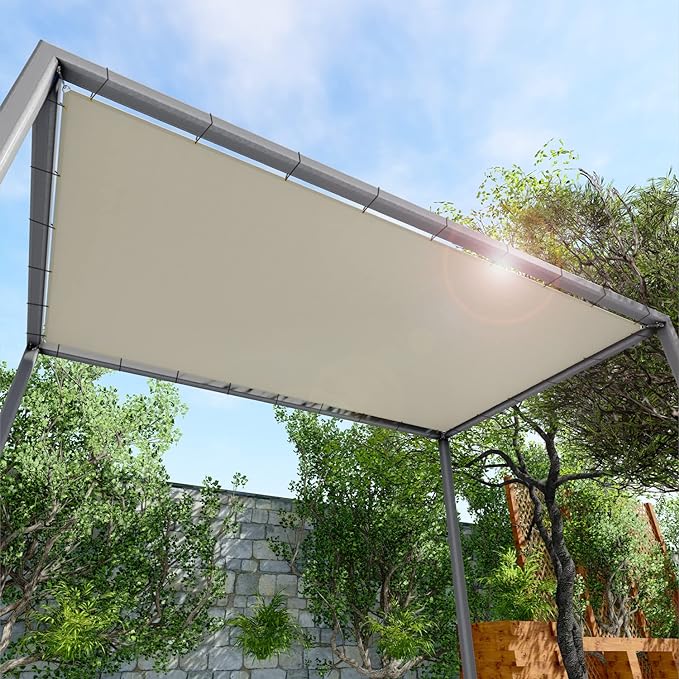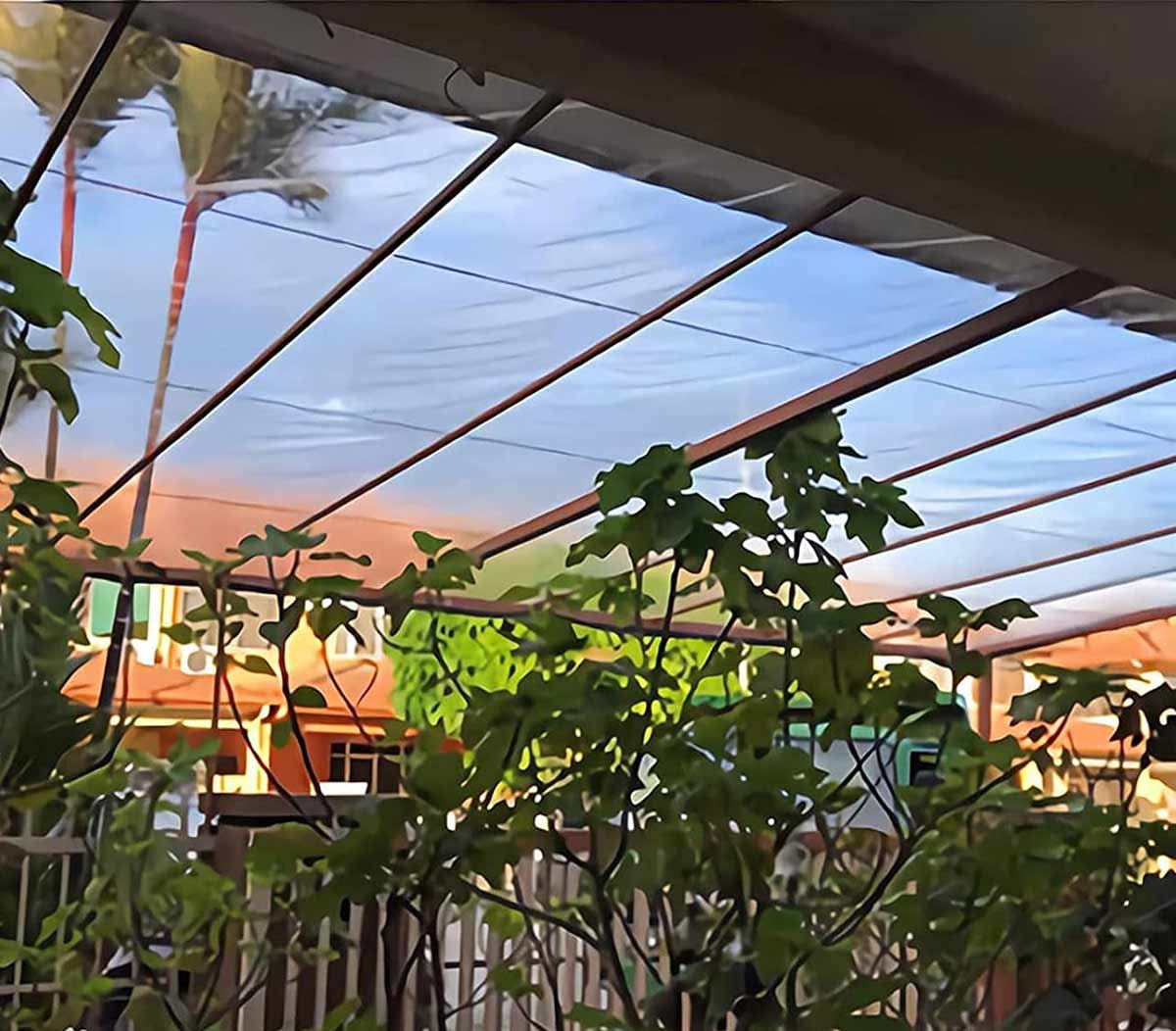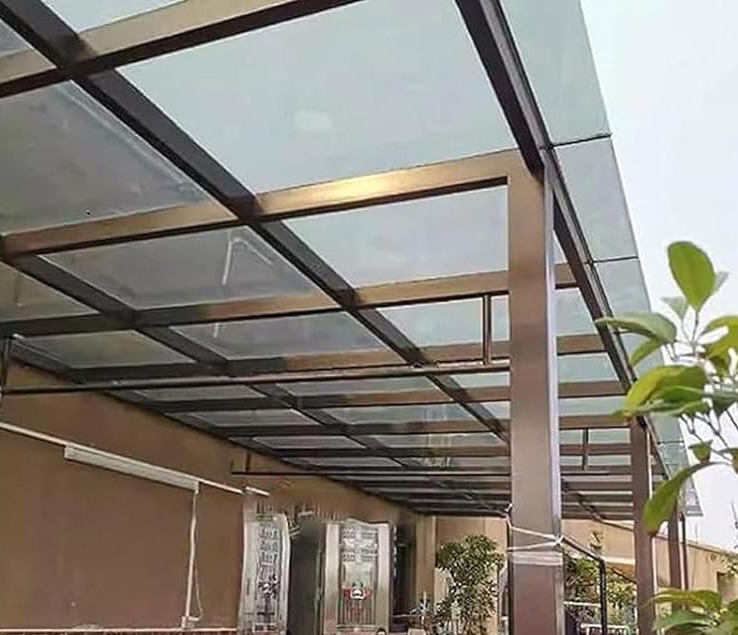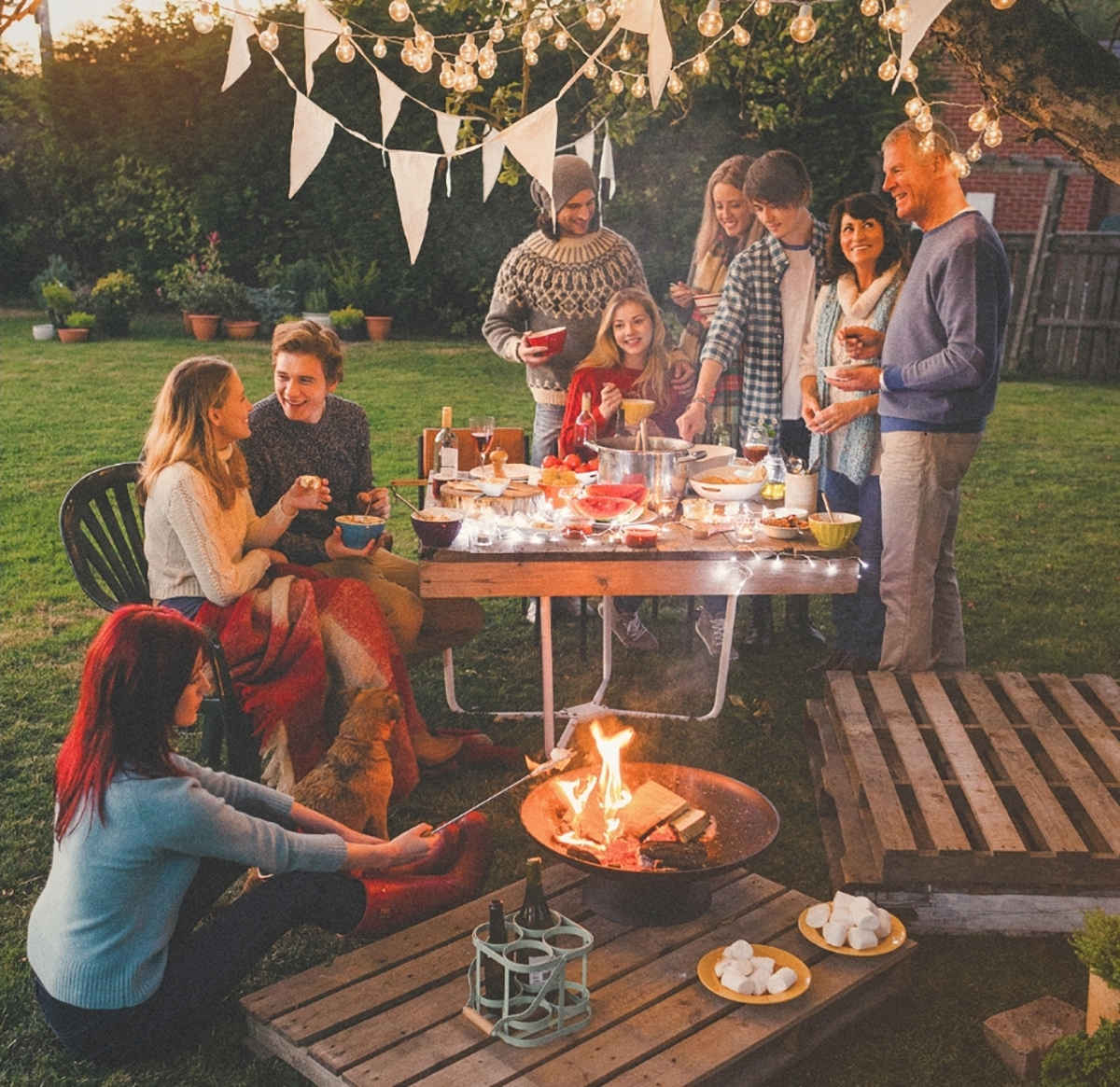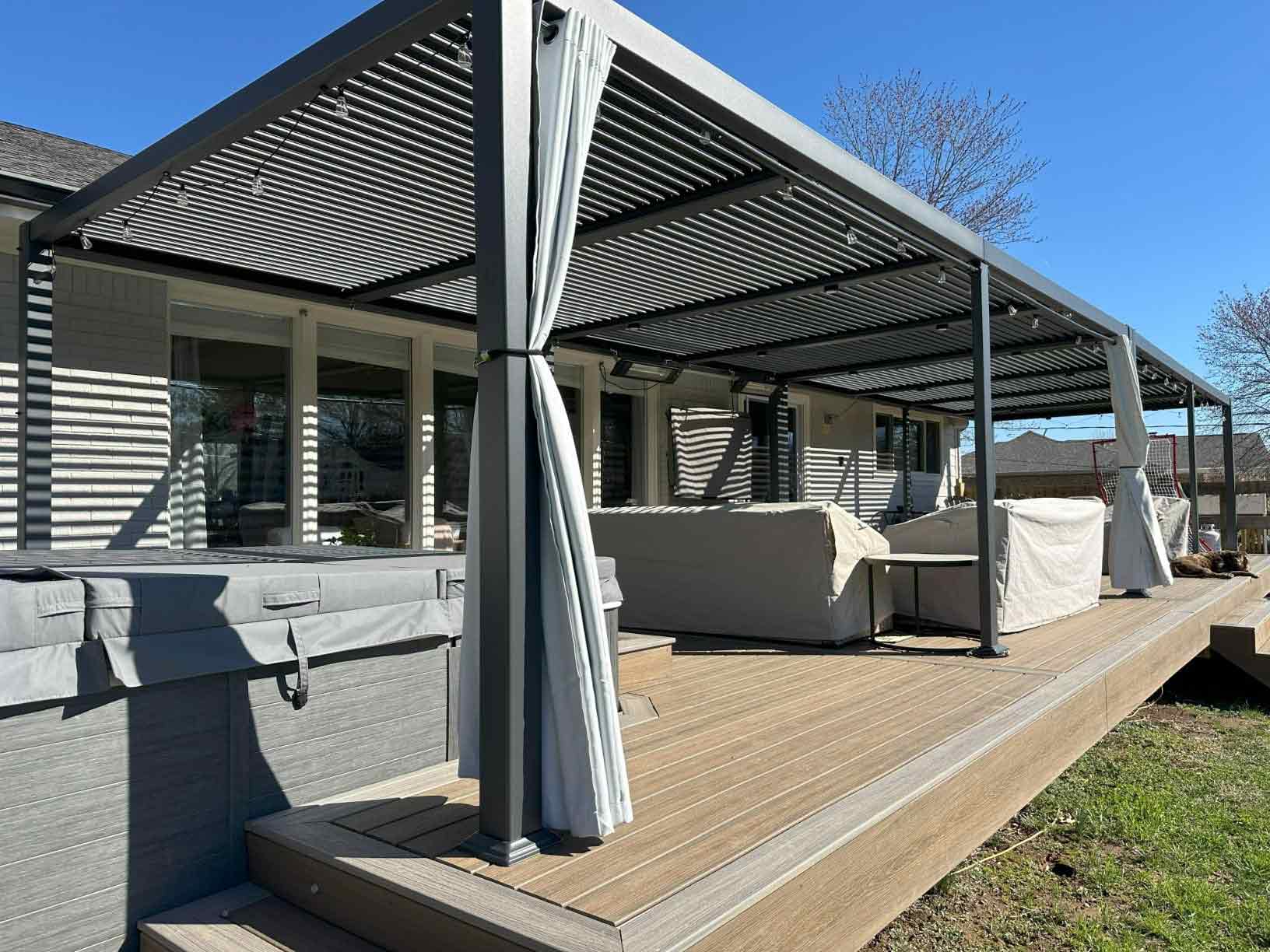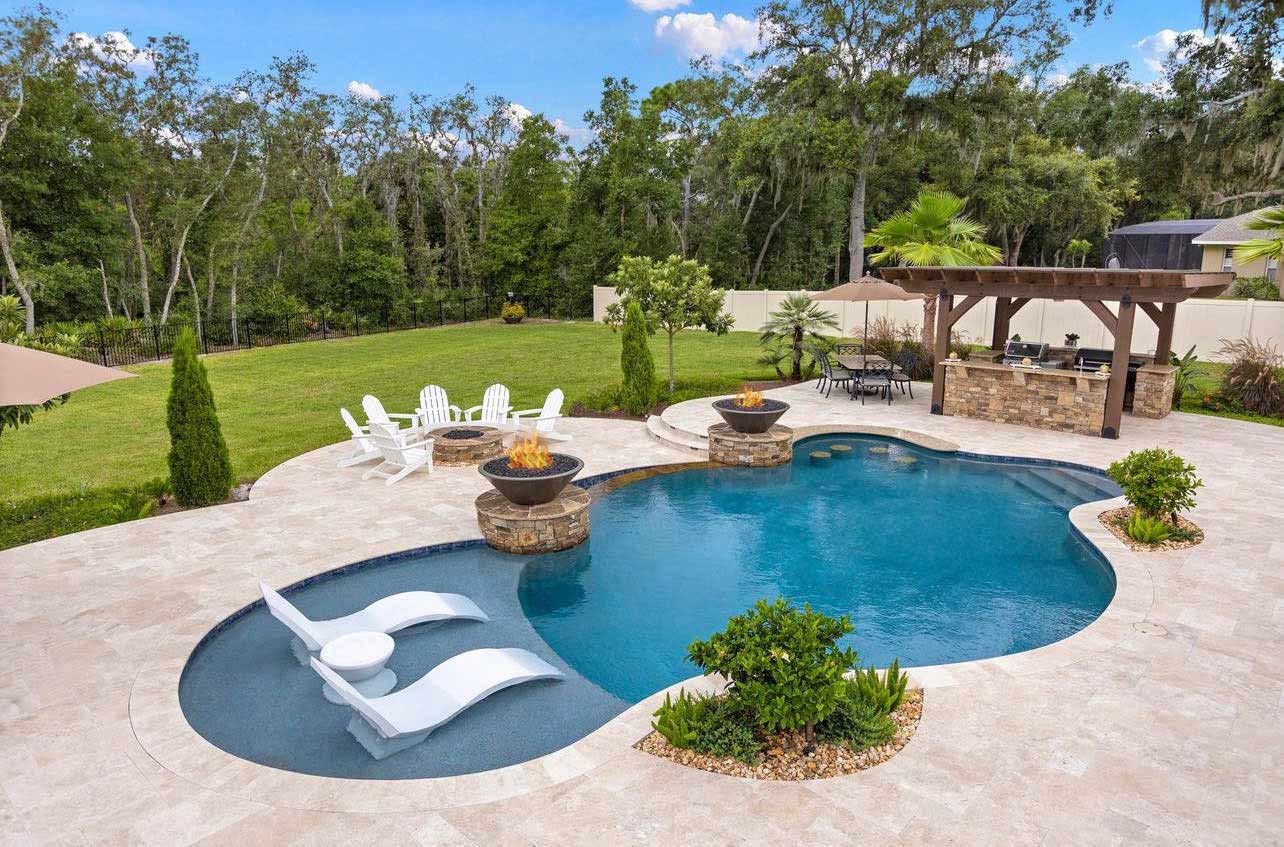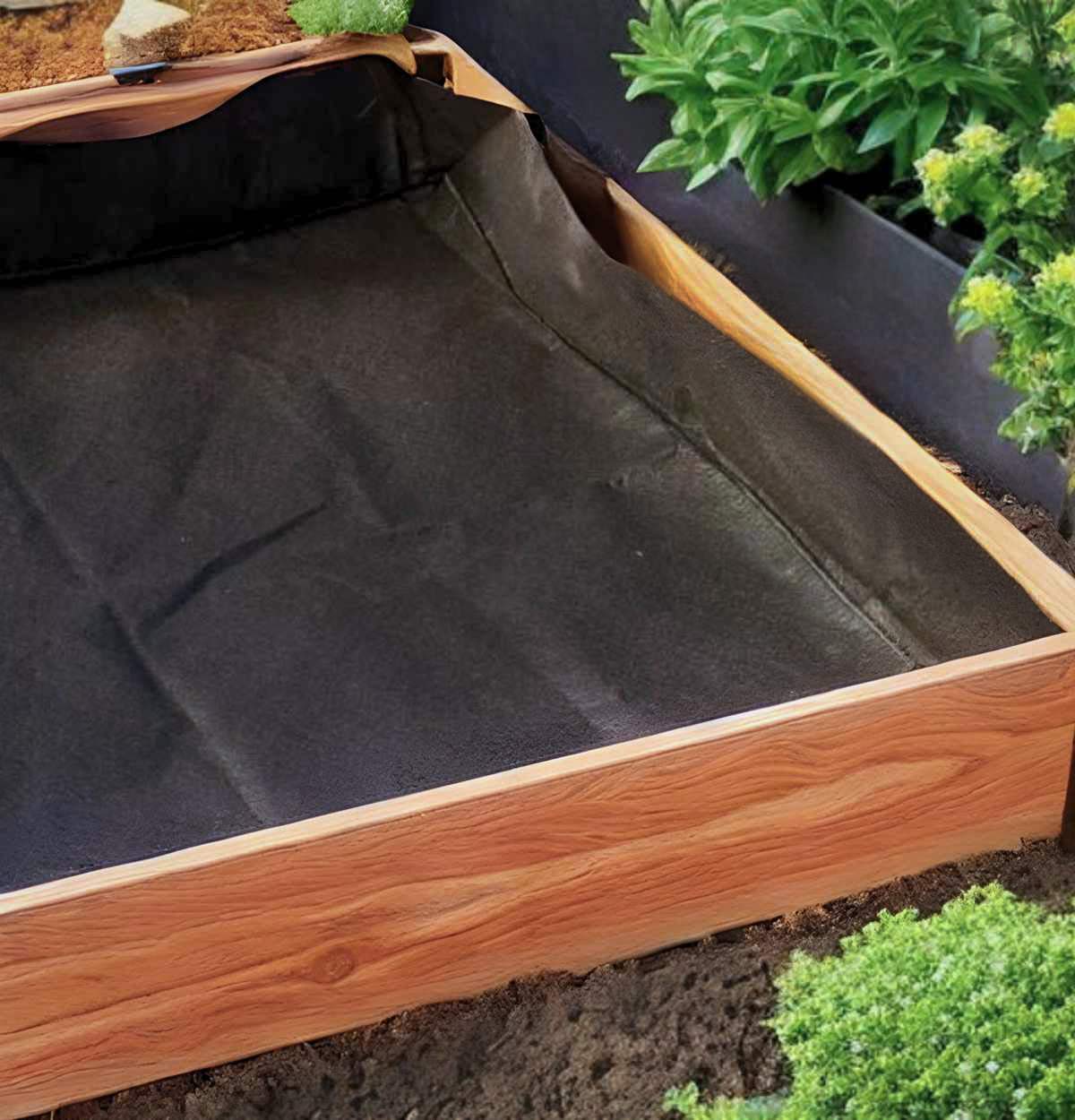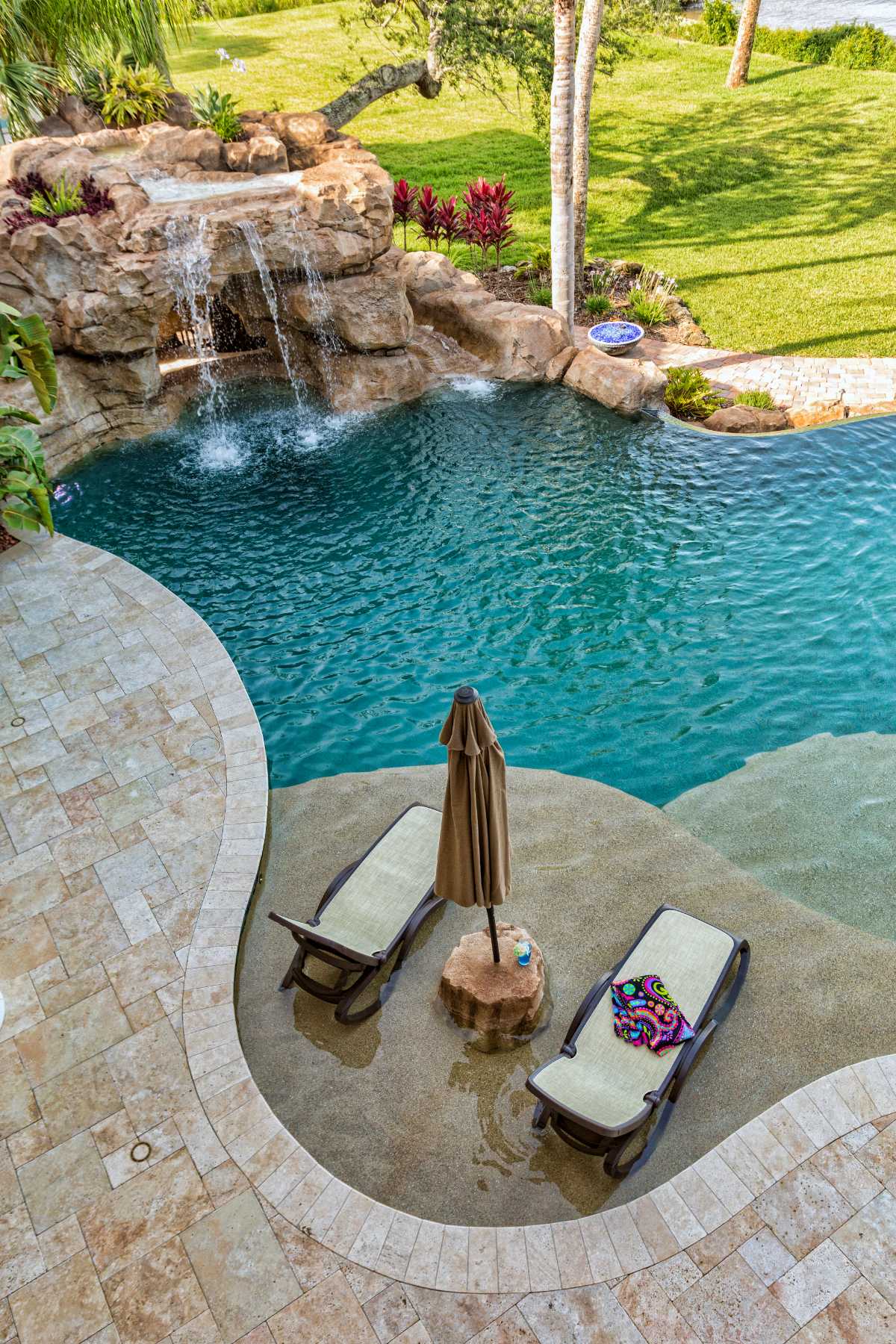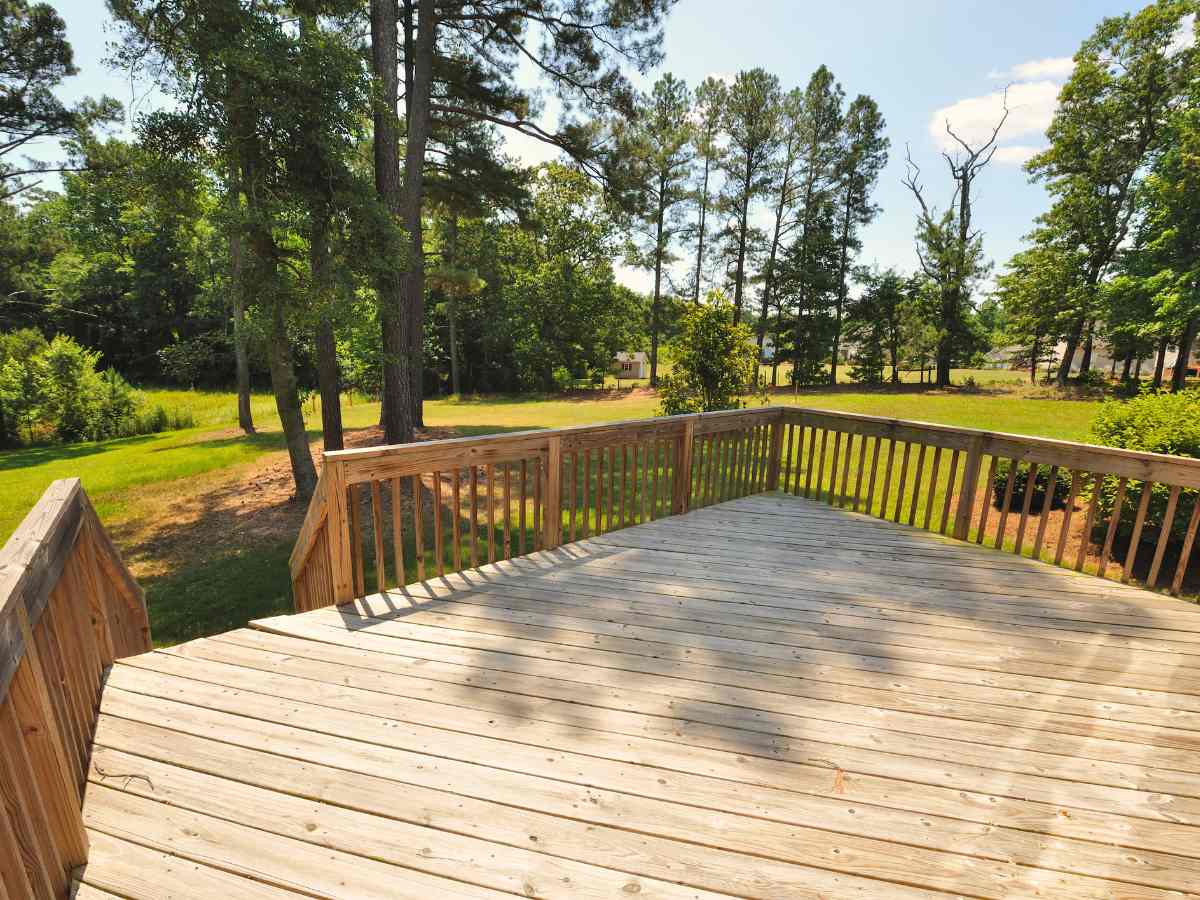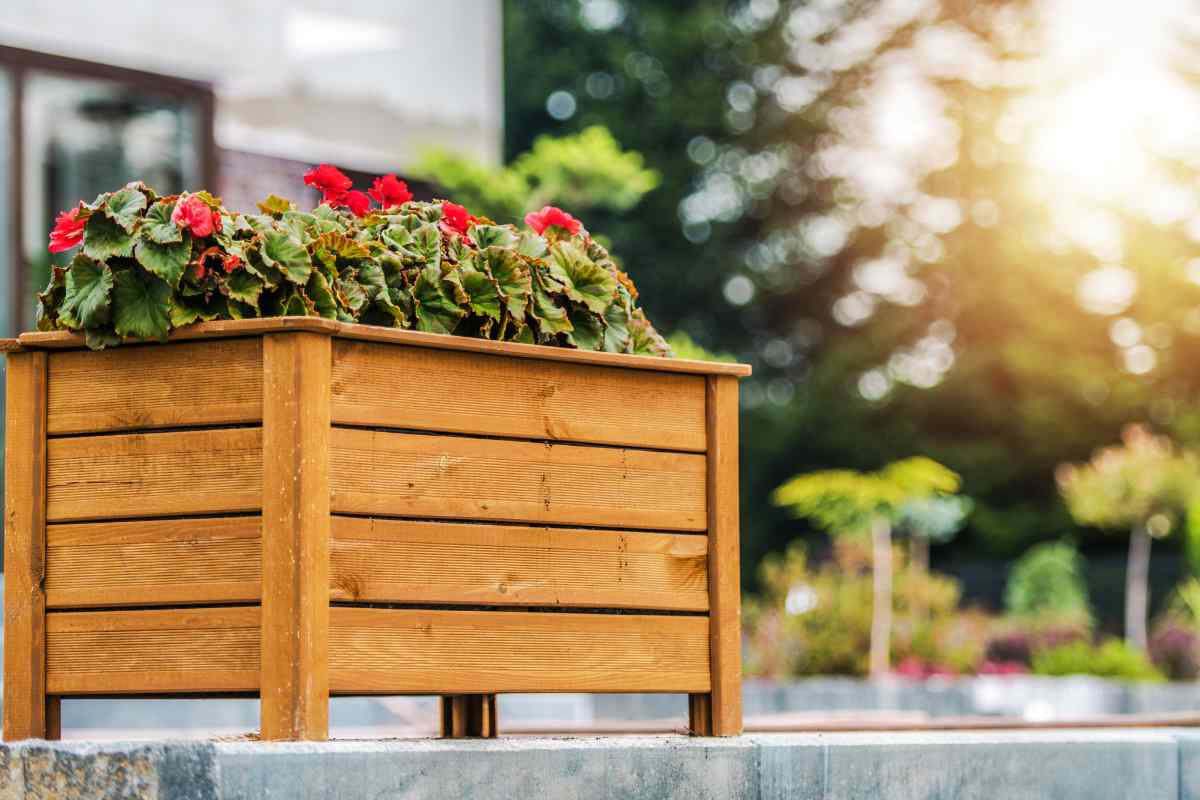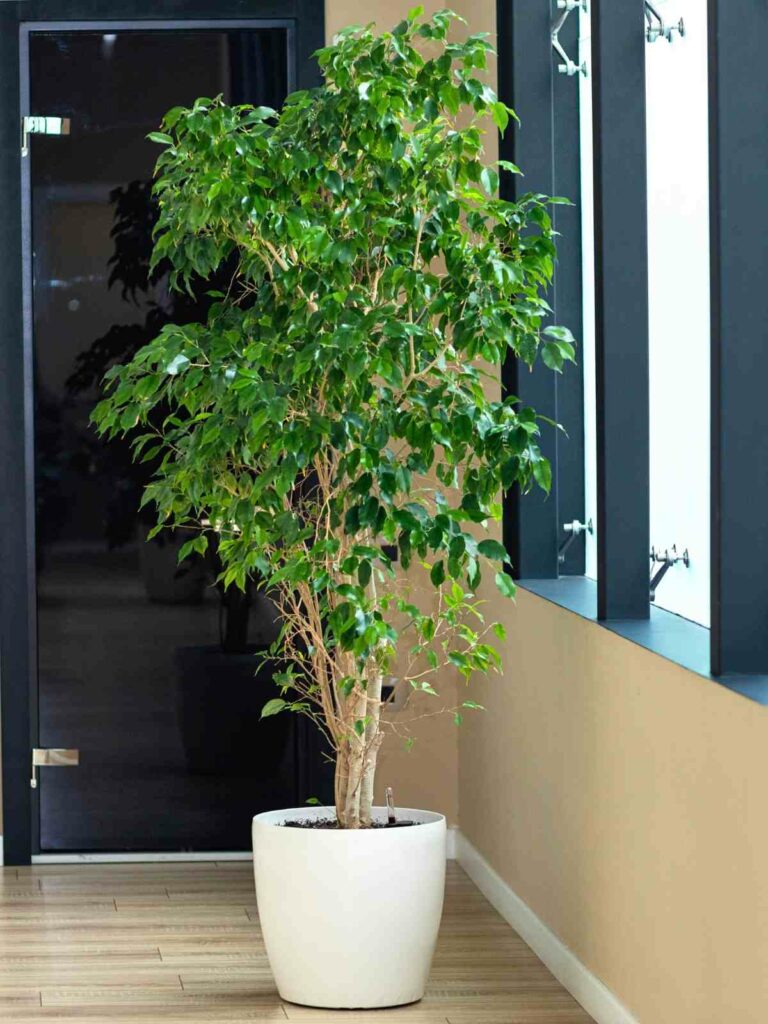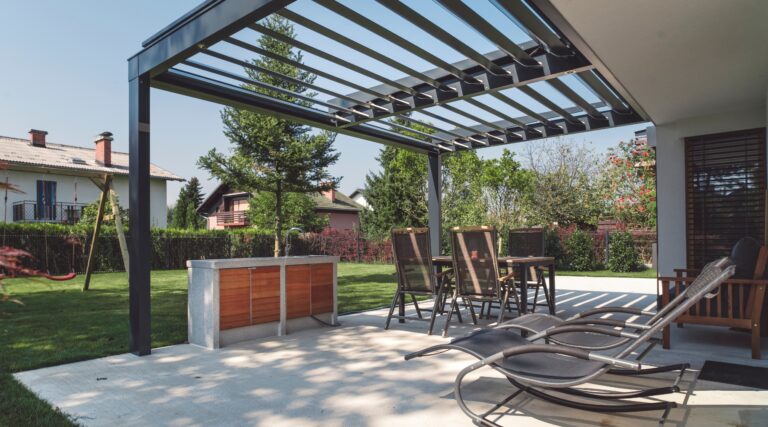Benefits of Pergola Roof Covers By Types And Needs
Whether you’re seeking style, functionality, or both, understanding the benefits of pergola roof covers is key to transforming your outdoor space. This guide will go into the different types of pergola covers available today including waterproof options, helping you make an informed decision based on durability, maintenance, cost and aesthetic appeal. Let’s learn about each of the types of pergola roof covers and their unique advantages and benefits for your specific backyard conditions.

The Benefits of Pergola Roof Covers
As homeowners, we all want to make the most out of our outdoor living spaces. Whether we have a small balcony, a large deck, or a spacious backyard, we want to create a comfortable and stylish area where we can relax, entertain, and enjoy the fresh air.
However, as much as we love spending time outside, we also need protection from the elements. The sun, rain, wind, snow and even hail can make it difficult to use our outdoor spaces, especially during extreme weather conditions. This is where pergola roof covers come in.
Related: Gorgeous Pergola Roof Ideas To Enhance Your Outdoor Space
1. Protection From The Sun
The most obvious benefit of a pergola roof cover is the shade it provides and by making your outdoor space more comfortable. During the summer months, the sun can be intense and radiate harmful UV rays, which can cause skin damage. With a pergola roof cover, you can create a cool and shaded area where you can relax, read a book, or entertain guests.
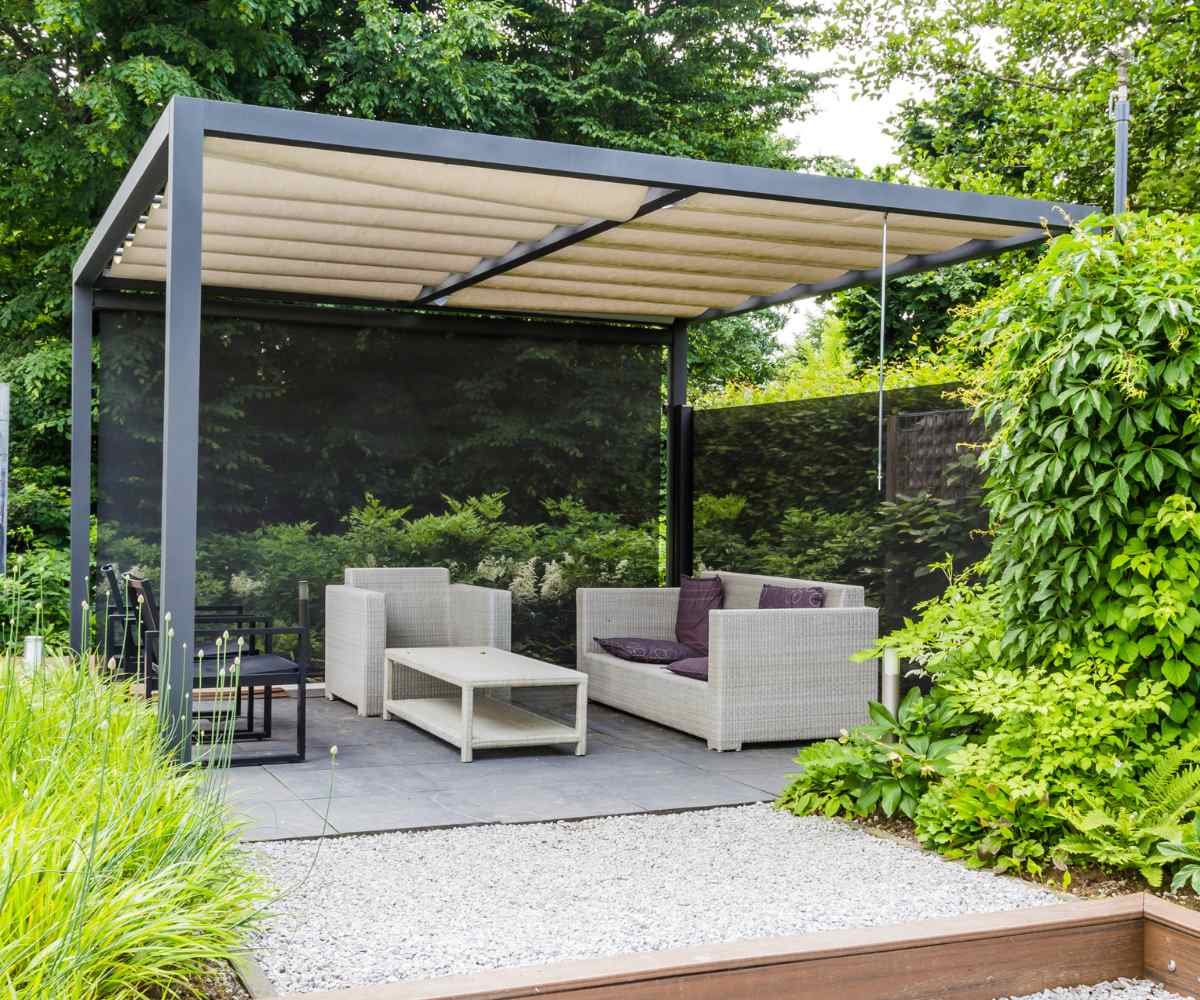
2. Protection From The Rain
While the sun can be a problem during the summer, rain can be an issue all year round. Without a pergola roof cover, your outdoor space can become unusable during rainy days, forcing you to stay indoors. However, with a pergola roof cover, you can still enjoy your outdoor space even when it’s raining. The cover will keep you and your outdoor furniture dry, so you can still have a barbecue, host a backyard party , or simply enjoy the sound of the rain.
3. Increased Privacy
If you have neighbors close by or live in a busy area, you might feel like your outdoor space is too exposed. A pergola roof cover and some side shades can provide some privacy, making it feel like you have your own little oasis. The cover blocks the view from above, creating a cozy and intimate space where you can relax without feeling like you’re on display.

Related: Deck Ideas On A Budget: Create A Stunning Outdoor Space For Less
4. Improved Aesthetics
A pergola roof cover can also enhance the look of your outdoor space. With so many pergola styles and designs available, you can choose a cover that complements your home’s architecture and your personal style. Whether you want a sleek and modern look or a rustic and natural feel, there’s a pergola roof cover that can achieve your desired aesthetic.
5. Increased Home Value
Finally, installing a pergola roof cover can increase the value of your home. An outdoor living space is a sought-after feature among homebuyers, and a pergola roof cover adds both functionality and beauty to your property. By investing in a pergola roof cover, you’re not only improving your quality of life, but you’re also making a smart financial decision.
Heads up: some links are affiliated & I may receive a small commission from qualifying sales. For more info see my disclaimer policy.
Types of Pergola Roof Covers According to Your Needs
Now that we’ve covered the general benefits of a pergola roof cover, let’s take a look at the different types that are available and what are their benefits according to your needs.
1. Fabric Canopy
A fabric canopy is a popular option for those who want a flexible and affordable way to provide shade and protection. They are also easy to remove and replace if you want to change up your look.

In terms of design and structure, a fabric canopy is typically designed as a more permanent and structured cover for a pergola. It may be fixed or retractable and is often custom-fitted to the pergola’s dimensions.
The pergola canopies can be made from durable, weather-resistant materials, such as canvas, heavy-duty polyester, or mesh, and can be attached to the pergola using grommets and ties, hooks, clamps or clips.
2. Fabric Shade Roll
Shade fabrics in terms of design and structure, are made of more versatile material when compared to pergola fabric canopies, as they can be used in various ways. The material is typically lighter and less structured than a canopy and may come in rolls or sheets.
Length and with is customizable, which gives you the option to create your own design and customize to fit your specific area. This type of fabric is usually easier to install and can be stretched over the pergola or used in a more free-form fashion, such as creating sails or draping.
Shade fabrics are often made from breathable materials like HDPE (high-density polyethylene), like this pergola shade cloth which allows airflow while blocking sunlight.
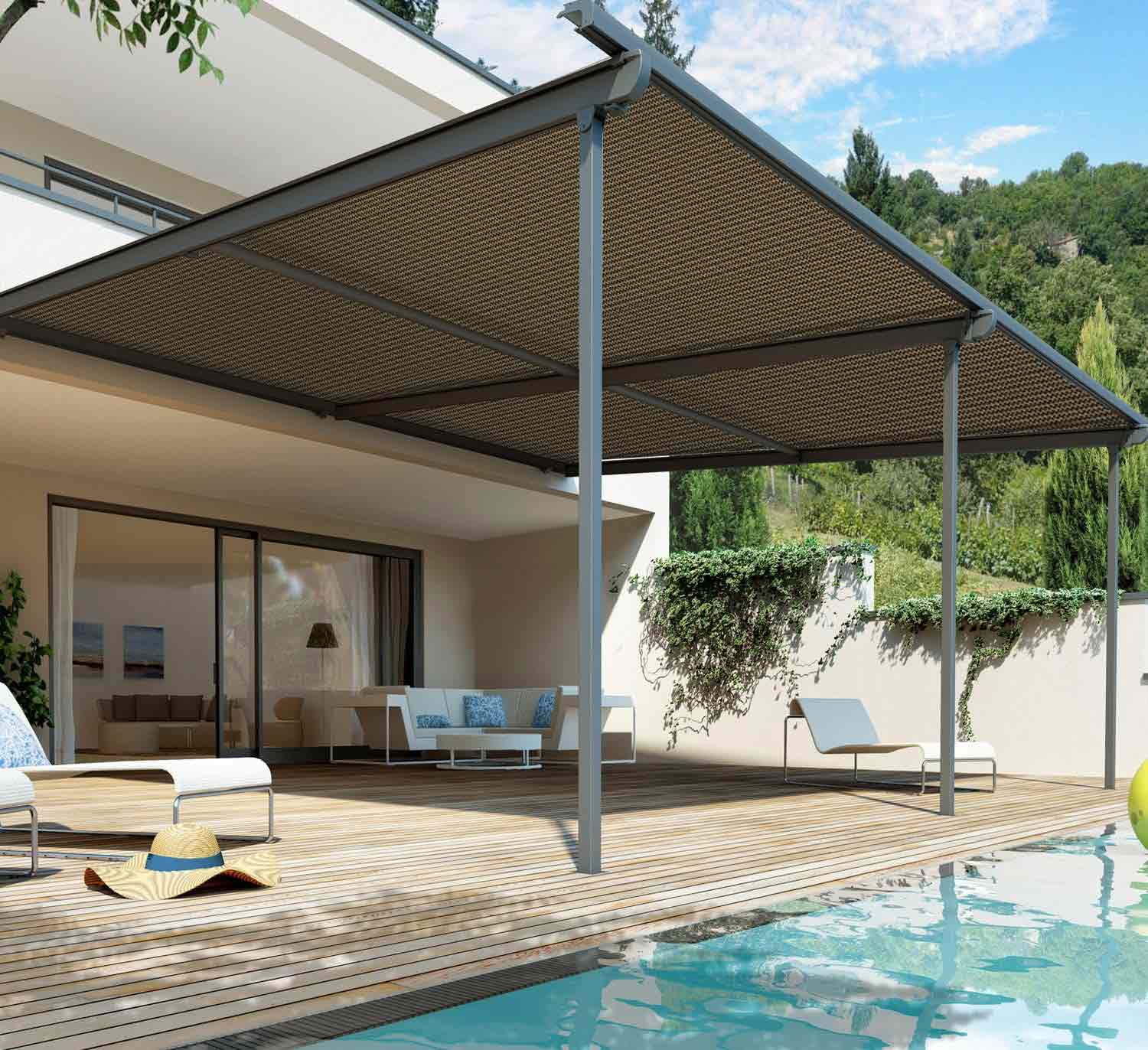
Its primary purpose is to provide shade and UV protection. While it offers some respite from the heat, it’s less effective against rain or heavy weather conditions.
3. Sailcloth or Marine Awning Fabric
Sailcloth is an innovative and flexible option for pergola covers, offering high strength, a contemporary and artistic flair, and effective sun UV protection that can be stretched into various shapes and angles to create customized designs.
Some marine fabrics like Sunbrella are not harsh weather-proof, which do better indoors, so you need to look for waterproof marine grade cloth if you want it to withstand extreme weather conditions.
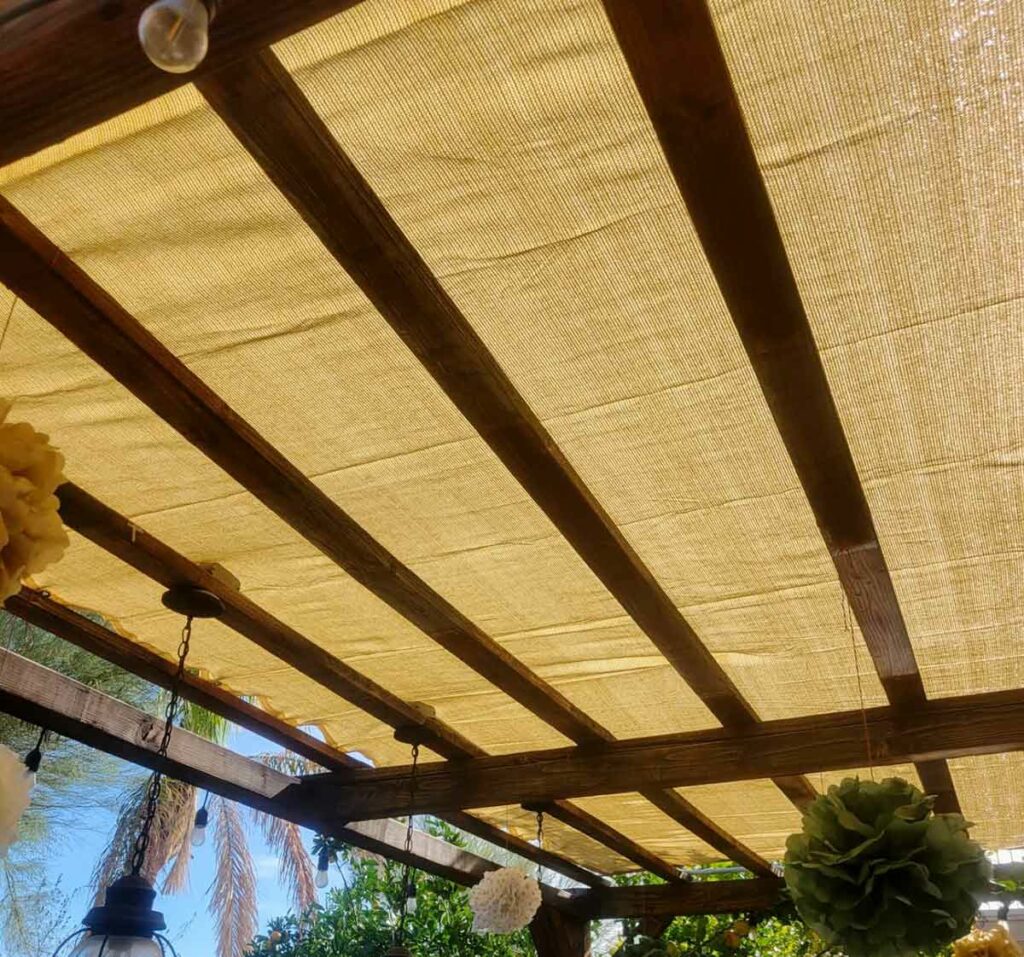
- High-Strength Material: Sailcloth is renowned for its durability. Originally designed for sails, it’s made to withstand strong winds and harsh sunlight, making it an excellent material for outdoor use. This resilience makes it superior to regular fabrics in terms of strength and longevity.
- Flexible Installation: One of the key advantages of sailcloth is its versatility in installation. It can be anchored to existing structures, poles, or even trees, depending on the design and layout of your outdoor space. This flexibility is not commonly found in more rigid materials like polycarbonate or glass.
- Breathability and Airflow: Unlike glass or solid metal covers, sailcloth allows for better airflow, making it a cooler option in hot climates. This breathability adds to the comfort of your outdoor living area.
4. Vinyl Covers for Pergolas
Vinyl pergola covers are a practical and stylish choice. Vinyl is known for its resilience, long life, and ease of care. It stands up well to various weather conditions, including rain, sun, and wind, without succumbing to rot, mold, or fading.
They make an excellent cheap waterproof pergola roof cover, whether you’re dealing with light drizzles or heavy downpours, a vinyl cover can keep your pergola area comfortable and dry.
Vinyl covers can be easier to install compared to other materials. They often come as part of a pergola kit, which includes pre-cut pieces and all the necessary hardware, making them a feasible option for DIY enthusiasts.
5. Polycarbonate Panels To Cover Pergola
Polycarbonate panels stand out as a superior choice for pergola covers, particularly when compared to fabric and vinyl options. Their foremost advantage lies in their exceptional durability and resistance to impact, far outlasting both fabric and vinyl in harsh weather conditions, from heavy rain to snow and hail.
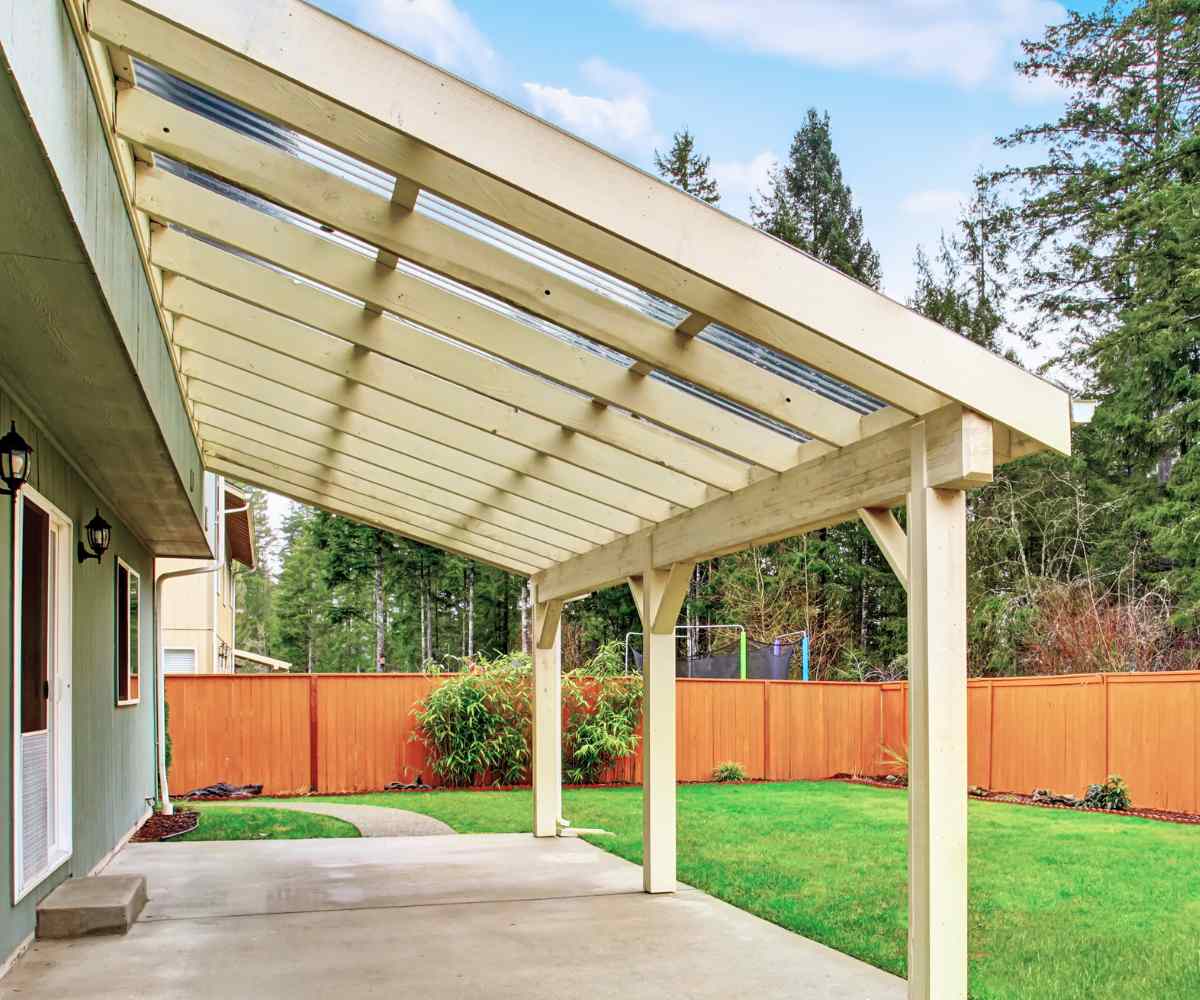
Unlike fabric, polycarbonate panels are completely waterproof and provide excellent UV protection, while allowing natural light to filter through, a feature that vinyl often lacks. Additionally, these panels are resistant to heat distortion and discoloration over time, maintaining their clarity and appearance much longer than fabric or vinyl, which can fade or become worn.
They are available in clear, tinted, or opaque options, and can be seamlessly integrated into any pergola design, enhancing the overall look of your outdoor living area with their modern, sleek appearance.
6.Glass Panels for Pergolas
Glass panels as pergola covers displays luxury and offer distinct advantages and considerations compared to other materials:
- Full Light Penetration: Glass panels allow complete light penetration, creating a bright and airy space underneath. This is in stark contrast to options like wooden slats or fabric covers, which only offer partial light.
- Protection from Elements: While they provide no shade, glass panels excel in protecting from rain and wind, much like polycarbonate or vinyl, but with the added benefit of unobstructed views.
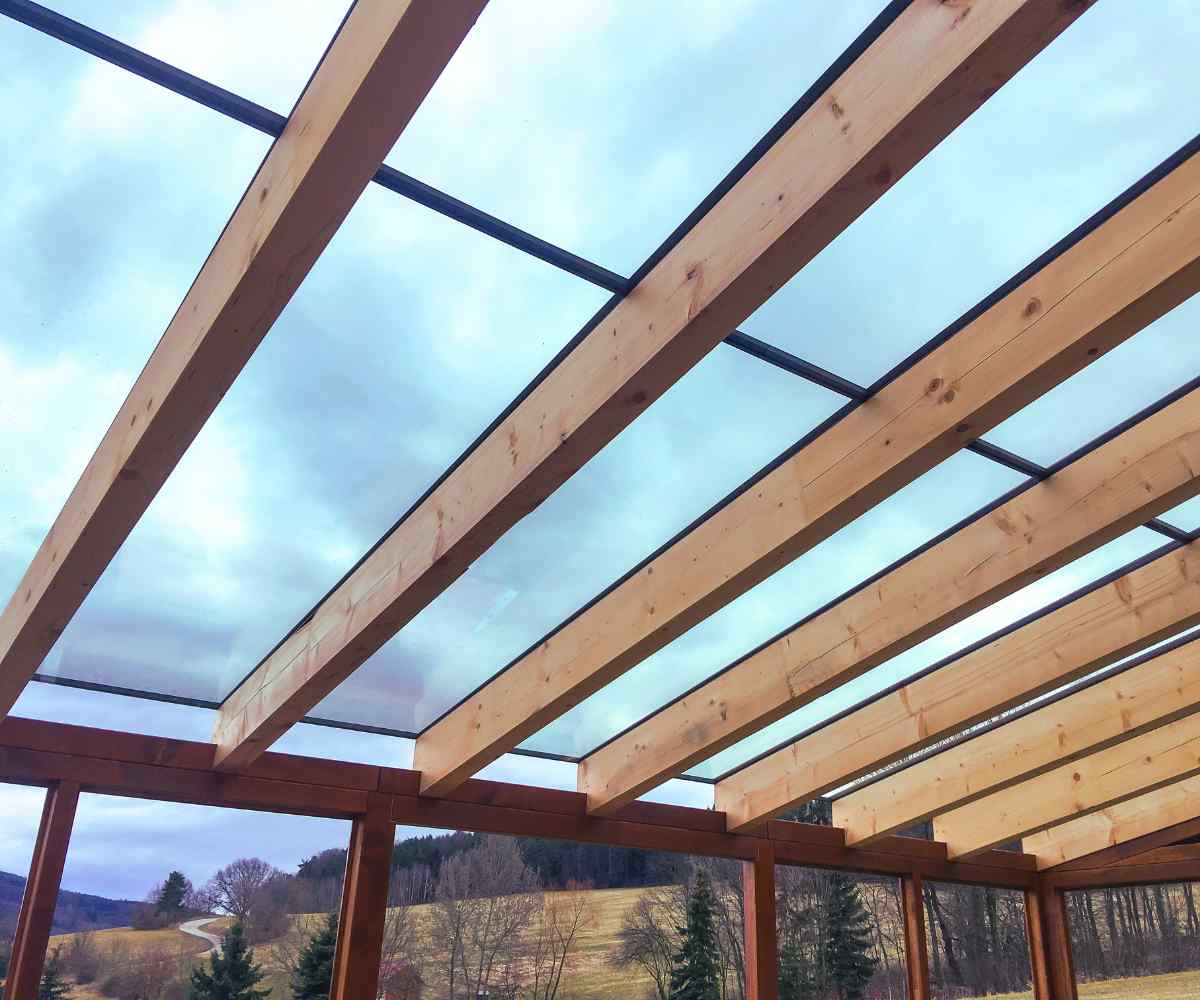
- Aesthetic Appeal: Glass adds a modern, sophisticated look that is unparalleled in terms of elegance. This aesthetic is quite different from the natural charm of wood or the more utilitarian look of materials like polycarbonate.
- Durability and Maintenance: High-quality glass, especially tempered or laminated, is durable but can be more prone to breakage than polycarbonate. In terms of maintenance, glass requires regular cleaning to maintain clarity, more so than materials like vinyl which can hide water spots or dust to some extent.
- Heat Consideration: Unlike fabric or slatted wood that allow for heat escape, glass can create a greenhouse effect, trapping heat underneath. This may require additional considerations for ventilation or shading.
- Cost Factor: Glass is typically more expensive, both in material and installation costs, compared to other options like fabric, wood, or even standard polycarbonate, making it a more premium choice.
7. Metal Pergola Roof Cover
Metal pergola covers offer a blend of durability, modern aesthetics, and practicality. Commonly made from materials like aluminum, steel, or tin, these covers are known for their strength and ability to withstand harsh weather conditions, including heavy rain and strong winds.
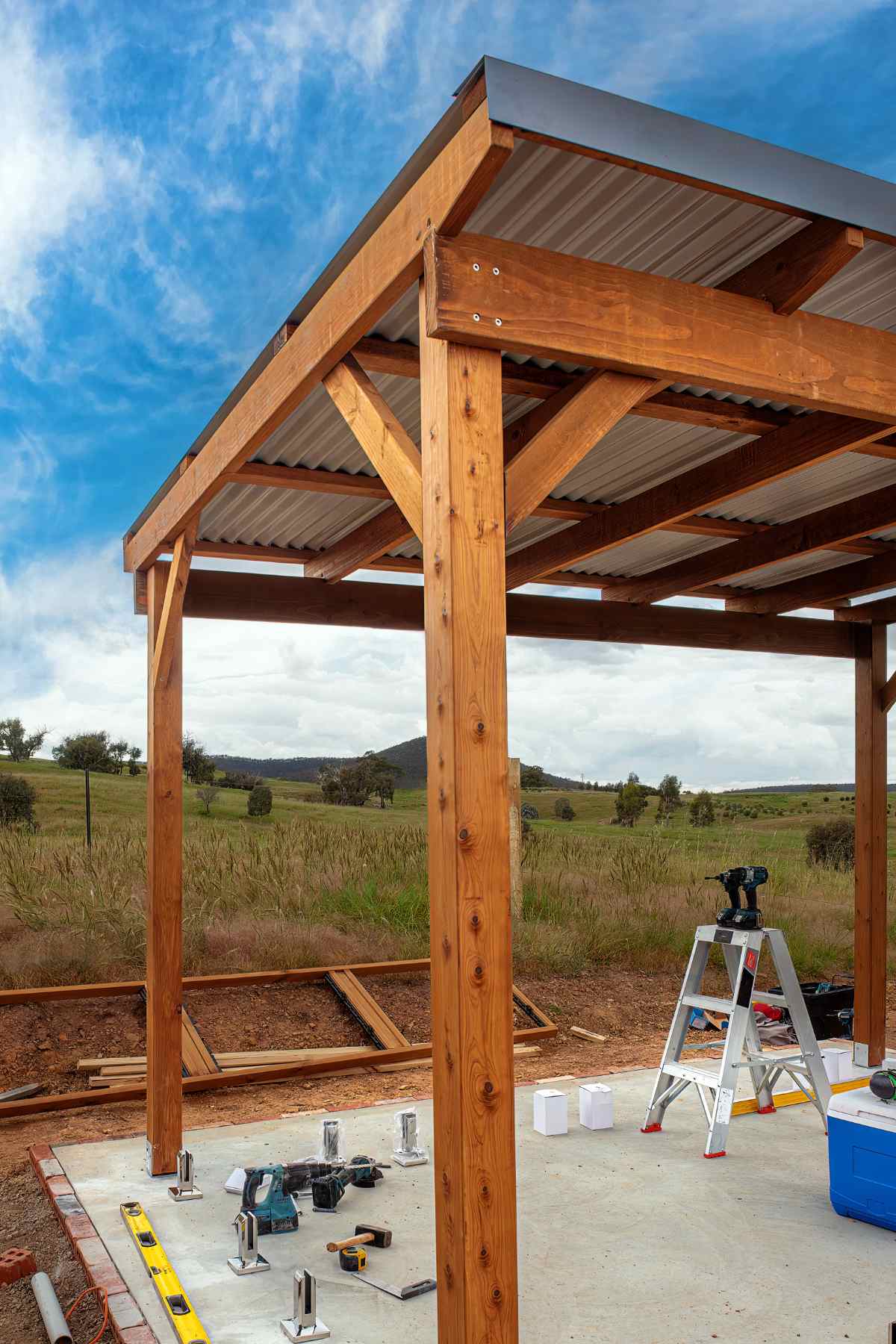
Metal covers provide complete protection from the elements, making them ideal for year-round use. While they are highly durable, one consideration is their maintenance, particularly in terms of preventing rust and managing heat, as metal can get quite hot under direct sunlight.
Nonetheless, for longevity and a modern touch, metal pergola covers are a strong, stylish choice for any outdoor space.
Overall Benefits By Need And Type
- Retractable Fabric Canopies: Ideal for flexibility, allowing you to adjust the amount of sunlight and shade. Perfect for those who want versatility in their outdoor space.
- Polycarbonate Panels: These offer a balance between protection from the elements and allowing natural light in. Choose this for a durable, light-transmitting cover.
- Shade Cloth: A great option for those who primarily seek protection from the sun while maintaining airflow. It’s less about rain protection and more about comfort on sunny days.
- Metal Roofing: Choose metal for maximum durability and protection from all weather conditions. It’s perfect for a permanent, low-maintenance solution.
- Wooden Slats or Lattice: Ideal for a natural look and partial shade, particularly if you’re interested in supporting climbing plants. It’s more about aesthetics and less about full protection from rain.
- Vinyl Covers: These are for those seeking a low-maintenance and waterproof option. Vinyl is versatile in appearance and durable in nature.
- Glass Panels: Opt for glass when luxury and full light penetration are your priorities, along with complete weather protection.
- Bamboo Roofing: A fantastic eco-friendly option that provides a unique aesthetic and good shade, though not as protective against rain.
- Sailcloth: Perfect for a modern, artistic look with flexibility in design. It offers UV protection and is ideal for sun shade. Some waterproof options provide heavy rain protection.
- Canvas Covers: Go for canvas if you want a sturdy, waterproof option that’s more flexible than hard roofing materials like metal or polycarbonate.
- Corrugated Fiberglass: This is a middle ground between letting light in and protecting against weather, offering durability and ease of maintenance.
Overall , each type of cover has its unique charm and functional advantages. The best choice depends on your specific needs, whether it’s flexibility, durability, maintenance, aesthetics, or cost. Consider factors like your local climate, the primary use of the pergola, and the style of your home and garden to make the best choice for your outdoor space.

